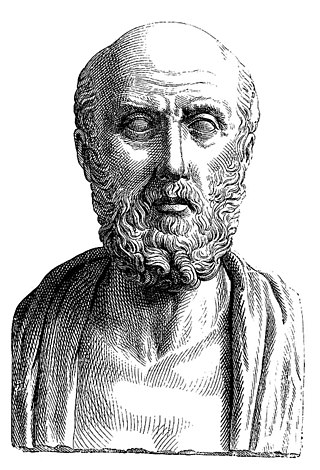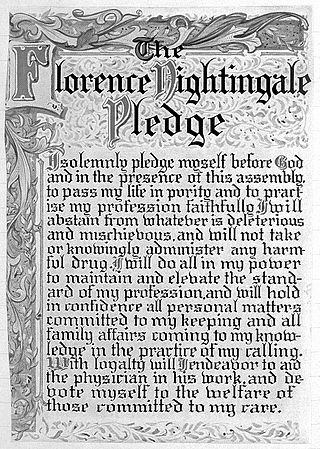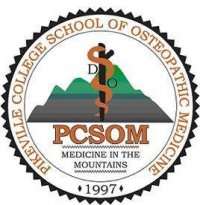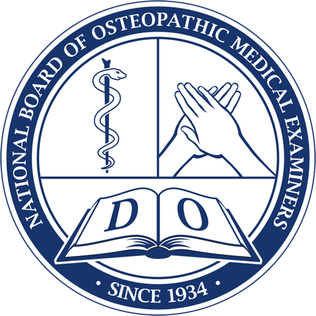
Hippocrates of Kos, also known as Hippocrates II, was a Greek physician of the classical period who is considered one of the most outstanding figures in the history of medicine. He is traditionally referred to as the "Father of Medicine" in recognition of his lasting contributions to the field, such as the use of prognosis and clinical observation, the systematic categorization of diseases, or the formulation of humoral theory. The Hippocratic school of medicine revolutionized ancient Greek medicine, establishing it as a discipline distinct from other fields with which it had traditionally been associated, thus establishing medicine as a profession.

A physician, medical practitioner, medical doctor, or simply doctor is a health professional who practices medicine, which is concerned with promoting, maintaining or restoring health through the study, diagnosis, prognosis and treatment of disease, injury, and other physical and mental impairments. Physicians may focus their practice on certain disease categories, types of patients, and methods of treatment—known as specialities—or they may assume responsibility for the provision of continuing and comprehensive medical care to individuals, families, and communities—known as general practice. Medical practice properly requires both a detailed knowledge of the academic disciplines, such as anatomy and physiology, underlying diseases and their treatment—the science of medicine—and also a decent competence in its applied practice—the art or craft of medicine.

The Hippocratic Oath is an oath of ethics historically taken by physicians. It is one of the most widely known of Greek medical texts. In its original form, it requires a new physician to swear, by a number of healing gods, to uphold specific ethical standards. The oath is the earliest expression of medical ethics in the Western world, establishing several principles of medical ethics which remain of paramount significance today. These include the principles of medical confidentiality and non-maleficence. As the seminal articulation of certain principles that continue to guide and inform medical practice, the ancient text is of more than historic and symbolic value. It is enshrined in the legal statutes of various jurisdictions, such that violations of the oath may carry criminal or other liability beyond the oath's symbolic nature.
The Declaration of Geneva was adopted by the General Assembly of the World Medical Association at Geneva in 1948, amended in 1968, 1983, 1994, editorially revised in 2005 and 2006 and amended in 2017.

In Greek mythology, the Rod of Asclepius, also known as the Staff of Aesculapius and as the asklepian, is a serpent-entwined rod wielded by the Greek god Asclepius, a deity associated with healing and medicine. In modern times, it is the predominant symbol for medicine and health care, although it is sometimes confused with the similar caduceus, which has two snakes and a pair of wings.
Osteopathic medicine is a branch of the medical profession in the United States that promotes the practice of science-based medicine, often referred to in this context as allopathic medicine, with a set of philosophy and principles set by its earlier form, osteopathy. Osteopathic physicians (DOs) are graduates of American osteopathic medical colleges and are licensed to practice the full scope of medicine and surgery in all 50 US states. The field is distinct from osteopathic practices offered in nations outside of the U.S., whose practitioners are generally not considered part of core medical staff nor of medicine itself, but rather are alternative medicine practitioners. The other major branch of medicine in the United States is referred to by practitioners of osteopathic medicine as allopathic medicine.
Medical ethics is an applied branch of ethics which analyzes the practice of clinical medicine and related scientific research. Medical ethics is based on a set of values that professionals can refer to in the case of any confusion or conflict. These values include the respect for autonomy, non-maleficence, beneficence, and justice. Such tenets may allow doctors, care providers, and families to create a treatment plan and work towards the same common goal. It is important to note that these four values are not ranked in order of importance or relevance and that they all encompass values pertaining to medical ethics. However, a conflict may arise leading to the need for hierarchy in an ethical system, such that some moral elements overrule others with the purpose of applying the best moral judgement to a difficult medical situation. Medical ethics is particularly relevant in decisions regarding involuntary treatment and involuntary commitment.
Primum non nocere is a Latin phrase that means "first, do no harm". The phrase is sometimes recorded as primum nil nocere.

The white coat ceremony (WCC) is a ritual in some schools of medicine and other health-related fields that marks the student's transition from the study of preclinical to clinical health sciences. At some schools, where students begin meeting patients early in their education, the white coat ceremony is held before the first year begins. It is an example of a matriculation. The ritual is a recent invention, first being popularized in the 1990s.

The Texas Tech University Health Sciences Center (TTUHSC) is a public medical school based in Lubbock, Texas, with additional campuses in Abilene, Amarillo, Dallas, and the Permian Basin. TTUHSC serves more than 100 counties in the western portion of Texas. The university is a separate institution from Texas Tech University; both universities are among five universities that are part of the Texas Tech University System. Texas Tech University Health Sciences Center El Paso, founded in 1969 as a branch campus of TTUHSC, became a separate institution in 2013.

The Nightingale Pledge, named in honour of Florence Nightingale, is a modified version of the Hippocratic Oath. Lystra Gretter and a Committee for the Farrand Training School Grace for Nurses in Detroit, Michigan created the pledge in 1893. Gretter, inspired by the work of Nightingale, the founder of modern nursing, credited the pledge to the work of her committee, but was herself considered "the moving spirit behind the idea" for the pledge.
The Seventeen Rules of Enjuin (延寿院医則十七ヶ条) are a code of conduct developed for students of the Japanese Ri-shu school of medicine in the 16th century CE. They contain the same number of precepts as the Seventeen-article constitution of Prince Shōtoku.
Most physicians in the United States hold either the Doctor of Medicine degree (MD) or the Doctor of Osteopathic Medicine degree (DO). Institutions awarding the MD are accredited by the Liaison Committee on Medical Education (LCME). Institutions awarding the DO are accredited by the Commission on Osteopathic College Accreditation (COCA). The World Directory of Medical Schools lists both LCME accredited MD programs and COCA accredited DO programs as US medical schools. Foreign-trained osteopaths do not hold DO degrees and are not recognized as physicians in the United States or in other jurisdictions.
A Hippocratic Oath for scientists is an oath similar to the Hippocratic Oath for medical professionals, adapted for scientists. Multiple varieties of such an oath have been proposed. Joseph Rotblat has suggested that an oath would help make new scientists aware of their social and moral responsibilities; opponents, however, have pointed to the "very serious risks for the scientific community" posed by an oath, particularly the possibility that it might be used to shut down certain avenues of research, such as stem cells.
Doctor of Osteopathic Medicine is a medical degree conferred by the 38 osteopathic medical schools in the United States. DO and Doctor of Medicine (MD) degrees are equivalent: a DO graduate may become licensed as a physician or surgeon and thus have full medical and surgical practicing rights in all 50 US states. As of 2021, there were 168,701 osteopathic physicians and medical students in DO programs across the United States. Osteopathic medicine emerged historically from osteopathy, but has become a distinct profession.
MBA Oath is a voluntary student-led pledge that asks graduating MBAs to commit towards the creation of value "responsibly and ethically". As of January 2010, the initiative is driven by a coalition of MBA students, graduates and advisors, including nearly 2,000 student and alumni signers from over 500 MBA programs around the world. By formalizing a written oath and creating forums for individuals to personally commit to an ethical standard, the initiative hopes to accomplish three goals:
- to make a difference in the lives of the individual students who take the oath,
- to challenge other classmates to work towards a higher professional standard, whether they sign the oath or not, and
- to create a public conversation in the press about professionalizing and improving management.

The University of Pikeville - Kentucky College of Osteopathic Medicine (UP-KYCOM) is the medical school of University of Pikeville, a private university affiliated with the Presbyterian Church (USA) and located in Pikeville, Kentucky. UP-KYCOM was established in 1997, grants the Doctor of Osteopathic Medicine degree. It is accredited by the Commission on Osteopathic College Accreditation (COCA) and the Commission on Colleges of the Southern Association of Colleges and Schools.
The Oath of Maimonides is a traditional oath for pharmacists and physicians attributed to Maimonides. It is not to be confused with the more lengthy Prayer of Maimonides. It is widely used as the traditional oath taken by pharmacists, analogous to the Hippocratic Oath for physicians, for which it is also used as an alternative.

The National Board of Osteopathic Medical Examiners (NBOME), founded in 1934 as the National Osteopathic Board of Examiners for Osteopathic Physicians and Surgeons, Inc., is a United States examination board which sets state recognized examinations for osteopathic medical students and began administering exams in February 1935. The NBOME is an independent, nonprofit organization and is headquartered in Chicago, Illinois and Conshohocken, Pennsylvania. The NBOME states that its mission is "to protect the public by providing the means to assess competencies for osteopathic medicine and related health care professions." The NBOME conducts research to monitor the quality of the COMLEX examinations.
Vejjavatapada, the Buddhist medical doctor's oath, is an oath to be taken by Buddhist doctors and other professionals working with the sick.








